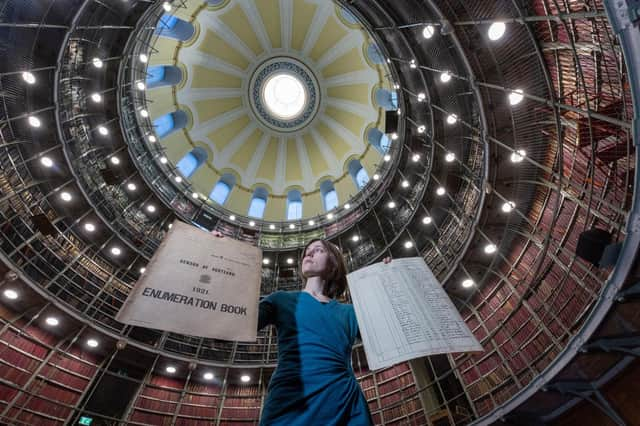Scotland's 1921 census: Unrest, poor times, women's rights and a one-hour-old baby


The release of the 1921 Census offers not just a glimpse into Scottish life but a deep gaze into those living through the economic and social turmoil that followed World War One and the devastation of Spanish Flu. For the first time, the number of orphaned children were counted, as were the number of divorcees.
An army of census takers travelled nationwide to hand deliver the census forms on Sunday, June 19 to every single property, from the most cramped tenement to the finest hotel. Those who slept on ships and in tents were also counted.
Advertisement
Hide AdAdvertisement
Hide AdJocelyn Grant, archivist at National Records of Scotland said the 1921 Census captured an “interesting time” in history but added the results didn’t depict the “the roaring 20s we’re used to hearing about”.
Ms Grant said: “Huge numbers live in poor, overcrowded conditions. Unemployment is high and there is widespread industrial unrest. The census shows soldiers stationed at collieries across central Scotland. A group of 156 soldiers are even using part of a school in Fife as a barracks.”
Soldiers with the 6th Battalion of the Black Watch were stationed at Denbeath Public School near Methil in Fife as the threat of the coal strike, spurred by the re-privatisation of the coal mines after the war and the associated lower wages, led to King George V declaring a national emergency. The taking of the census, which was originally due to take place on April 24, was itself delayed by the industrial unrest.
Ms Grant said the census also reflected changing attitudes to women, with a change in law – The Sex Disqualification (Removal) Act 1919 – allowing women to pursue careers in professions such as law and the civil service.
Madge Easton Anderson, the first woman in Britain to qualify as a solicitor, is recorded as a 25-year-old ‘law agent’ who lived with her parents and sisters in Glasgow. Margaret Kidd, who became the first woman to be called to the Scottish bar, Britain’s first female King’s Counsel and the first female Sheriff Principal, was recorded as a 19-year-old law student.
Georgina Macleod, 28, of Govan, appears in records as female police officer.
Meanwhile, the one-hour-old baby born to a wealthy Dundee family became Dr Lockhart Frain-Bell, veteran of the Burma Campaign and consultant radiologist at Dumfries and Galloway Royal Infirmary. He died in 2020 aged 99.
It was in Dumfries that James Todd – the oldest citizen recorded in 1921 at the age of 109 – also ended up. Originally from Renfrew, he lived at 34 Queensberry Street, a lodging house where 59 people were recorded in 11 rooms. Records show most of the boarders were out of work but a machine mender, a number of labourers and a hawker were listed there.
Advertisement
Hide AdAdvertisement
Hide AdMs Grant added: “Recorded on the night of 19 June 1921 we can explore where a person was staying, what their home was like, who they were with, what their occupation was and who they worked for. This information makes the census a fantastic resource for researchers and family historians.”
The 1921 Census, made up of 4.8m individual records, is now available on the ScotlandsPeople website.
Comments
Want to join the conversation? Please or to comment on this article.